To get a glimpse into the future of Scarborough-based Hannaford, one need only visit the grocery chain’s recently opened “learning lab” store in Bedford, New Hampshire.
The location is Hannaford’s most high-tech store, while also being a throwback to the olden days of high-touch customer service. Aided by computers, tablets and touch screens, the store’s employees will cut your produce any way you like, help you select the best cut of meat or the perfect bottle of wine, and prepare your entire meal to eat in the store’s café or take home and throw directly into a pot. They’ll even do your shopping for you.
“We’re excited about innovation, and a focus on the future,” said Hannaford President Mike Vail.
While some retailers are running scared from the consumer shift toward online shopping and shrinking their brick-and-mortar footprints, Hannaford is leaning in and going on the offensive. Its weapons of choice are freshness, convenience and local pride.
The strategy is intended to help the chain compete in an increasingly crowded market. A 2016 study on U.S. grocery shopping trends by the Hartman Group for the Food Marketing Institute found that the competitive landscape for supermarkets has become more fragmented, as more retailers have gotten into the game.
The study found that shoppers increasingly rely on a broader number of less-traditional providers including Wal-Mart, Target and Amazon, making it more difficult to find consumers who claim a specific provider as their retailer of choice for groceries.
It also found that in addition to the decline in chain loyalty, shoppers are purchasing more grocery items online and using digital tools to plan trips, compare prices and share food experiences.
Hannaford isn’t abandoning supermarket staples such as brand-name canned and boxed foods, but those aisles are not where the company expects to see future revenue growth. Such items belong in what Vail calls the “leaky bucket.”
“Nonperishable products are much more susceptible to online purchases,” he said.
So Hannaford is placing greater emphasis on the items that cannot be purchased easily online, including fresh produce, meats, ready-made meals, wine and beer. At the 68,000-square-foot Bedford store, which opened in June, those sections are being blown out to the extreme and experimented upon with a variety of test products and services. Those that succeed will make their way into other locations. Hannaford has more than 180 stores in northern New England.
A PREMIUM ON CONVENIENCE
As with most Hannaford stores, the main entrance to the Bedford location leads directly into the produce section, but there are a few differences. One is an island in the middle of the section that is staffed by three employees who are available to slice, dice and combine fresh produce to customers’ specifications, to make cooking at home more convenient.
Another change is the much greater variety of already-cut fruits and vegetables, both in terms of product types and container sizes. The point is to make produce shopping more convenient for a wide variety of shoppers with different needs, Vail said.
Directly behind the produce section is the meat and fish counter, where Hannaford is including more partially prepared dishes, as well as products that come from local farms and fisheries.
“We pulled meat forward, so it’s the No. 2 area right behind produce,” Vail said.
The meat and fish counter includes signs with detailed information about each product, and workers have access to iPad tablets with additional information, including videos. Vail said part of that effort is to make the buying process more user-friendly for younger shoppers who might not know exactly what they want.
“Meat can be intimidating for millennials,” he said.
Both the produce and meat areas contain island displays featuring various products from local and regional farms. Each island includes signs with information about the farm and its products. Vail said Hannaford’s extensive market research found that many customers want to buy fresh items from nearby sources. They want to know where the products came from, and how they were handled in the process.
“It makes people feel good, and they’re supporting their local food growers,” he said, adding that Hannaford now carries about 6,000 locally sourced items. Representatives of the local farms also visit the store regularly to hand out samples and answer questions, Vail said.
The company also is trying out an idea to turn Hannaford stores into social gathering places. The Bedford location contains a large, WiFi-enabled café at the front of the store, with an adjacent kitchen where diners can purchase a wide range of made-to-order foods for immediate consumption, including sandwiches, salads, pizza, Mexican food, sushi and stir-fry. Hannaford is promoting the café as a place for business lunches and family dinners.
“That’s a big experiment for us, that café,” Vail said.
Vail said the kitchen is a good business-within-a-business because the mark-ups on fully prepared meals are much higher, and the supermarket itself offers a nearly limitless supply of ingredients. For example, customers can order a gourmet grilled panini sandwich made with any meats and cheeses available from Hannaford’s deli.
So far, the most popular area of the kitchen is the stir-fry bar. Customers select their ingredients and hand them off to an employee who adds the customer’s desired fresh meats and sauces from a menu, then stir-fries them together on the spot.
“People love the stir-fry,” Vail said. “We get over 800 orders a week,” which is about all the store can currently handle.
The Bedford store’s beer and wine section is double the size of those in other Hannaford stores. Vail said beer and wine is another product area that is ripe for revenue growth, with more consumers interested in trying out the best gourmet or locally made products. Bottles of wine at the Bedford store range in price from $5 to $250.
“We made a big bet on wine, with a huge allocation (of space),” Vail said.
TRACKING CONSUMER CHOICES
When shopping at Bedford’s experimental supermarket, don’t be surprised if a staff member asks to follow you around on a “shop-along.” They’re less interested in what you buy as they are in how you buy it. Do you snake up and down the aisles from one end of the store to the other, or do you head directly to certain areas in search of specific items?
In addition, Hannaford has embedded RFID chips into shopping carts to track the progression of shoppers around the store. Vail said information gathered from the shop-alongs and RFID chips will help the company improve its placement of products inside its stores.
For example, the Bedford store now includes a mini-store near the entrance that contains staple items that in most supermarkets are all the way to the back of the store, such as milk and other dairy products. Vail hopes such features will make grocery shopping more convenient and desirable for customers.
The Bedford store also has taken the grocery chain’s “Hannaford To Go” service to the next level. A large room at the front of the store is devoted to storing and arranging orders placed by customers online, and staff members roam the aisles compiling pickup orders for online customers. The store has two drive-thru lanes, one for pharmacy customers and the other for Hannaford To Go patrons.
Nationally, many supermarket chains have implemented features similar to those being introduced inside Hannaford’s Bedford store. However, many of those are high-end stores catering to wealthier customers willing to pay higher prices. Vail said one of the key requirements for Hannaford is that none of the changes results in price increases on any items.
“Pricing is still 50 percent of the decision on where you shop,” he said.
An hour away in North Berwick, Hannaford is testing another strategy with a small-format store of just 20,000 square feet. The North Berwick experiment is to use data about local demographics and customer feedback to curate a smaller inventory that still meets local shoppers’ needs.
Vail said the North Berwick store could become the model for how to place more Hannaford stores in smaller communities that would not be able to support a full-size store.
North Berwick Hannaford shopper Kim Neault, who lives in Sanford, indicated the experiment is succeeding.
“Even though it’s smaller, it has everything I need,” she said.
Vail said the strengths Hannaford is building on at its Bedford lab and other stores should be enough to prevent online retailers from taking over the grocery business at the local level.
“If Amazon wants to come into this space, there’s no way they should be able to handle freshness the way we handle freshness,” he said.
Send questions/comments to the editors.


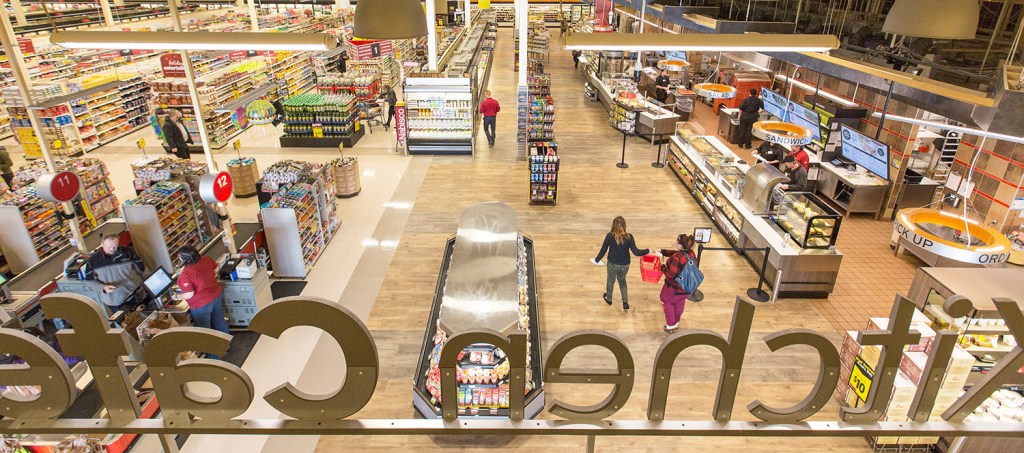
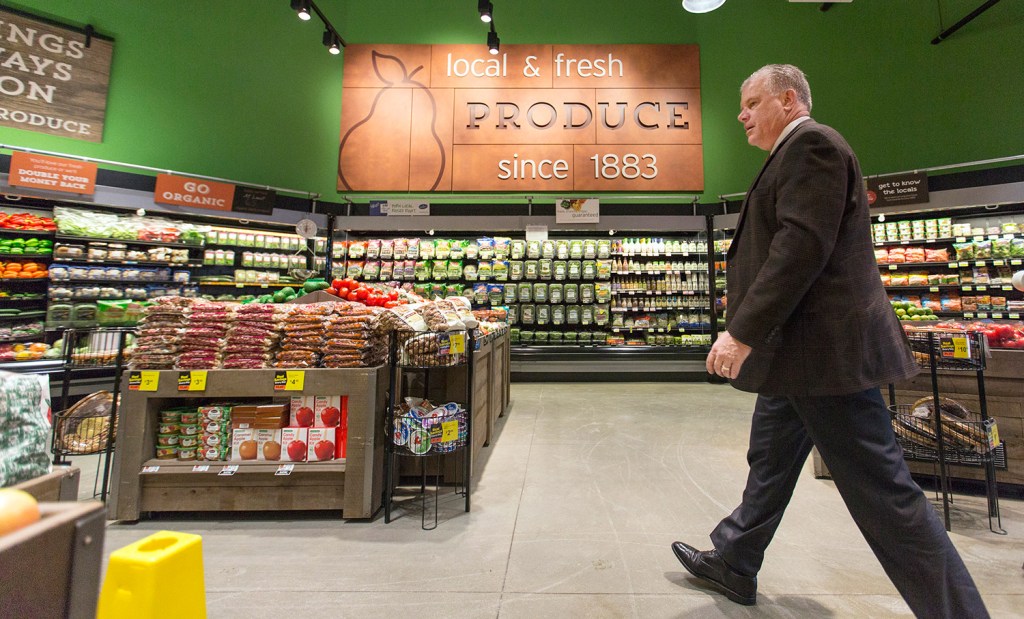
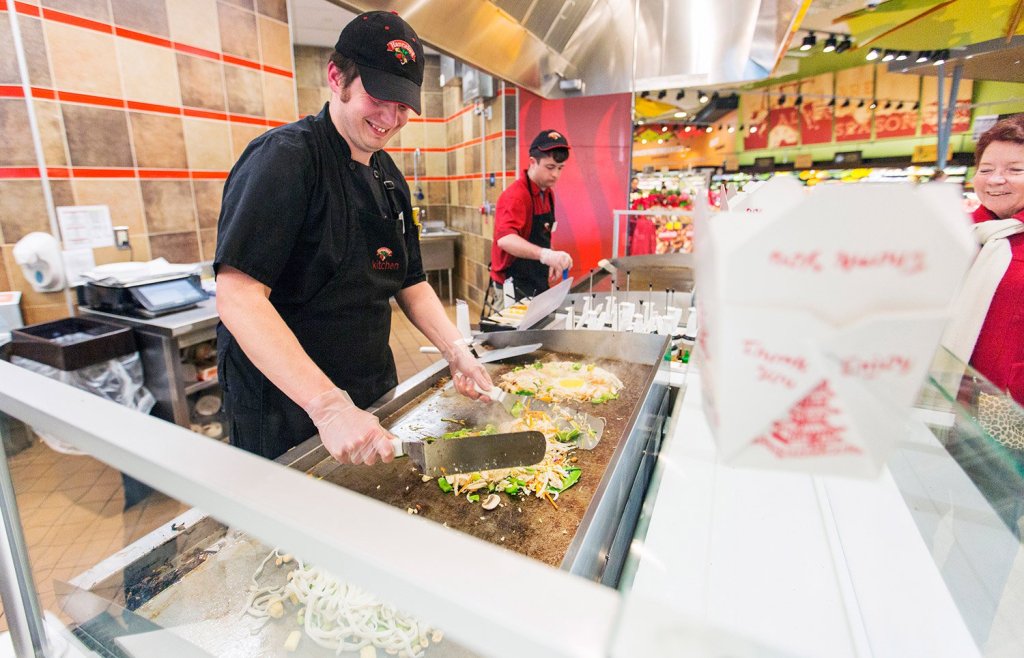
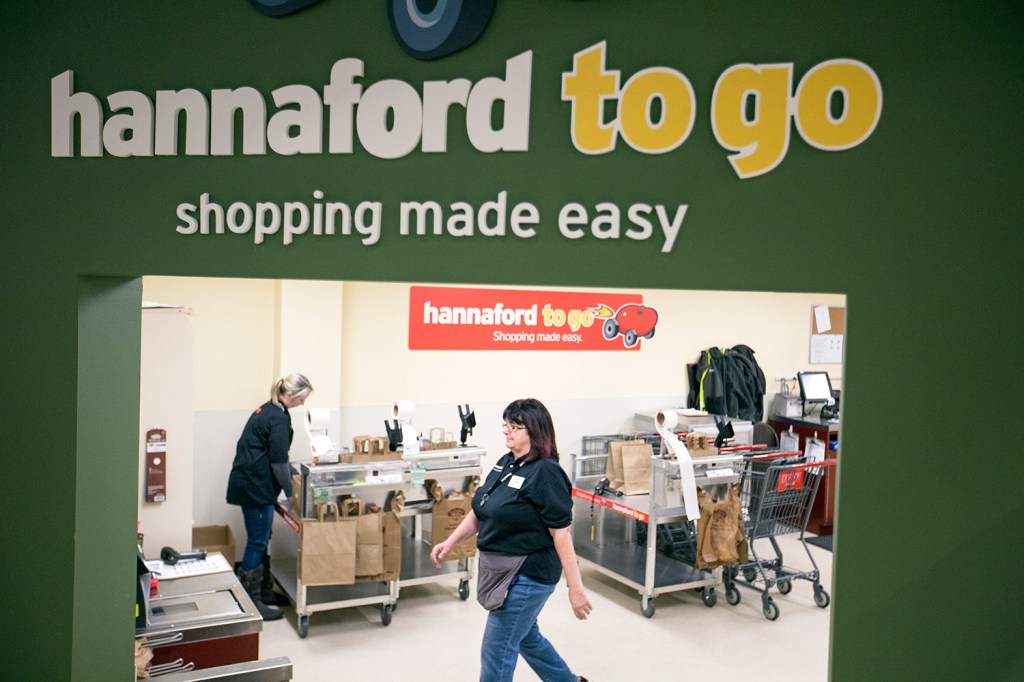
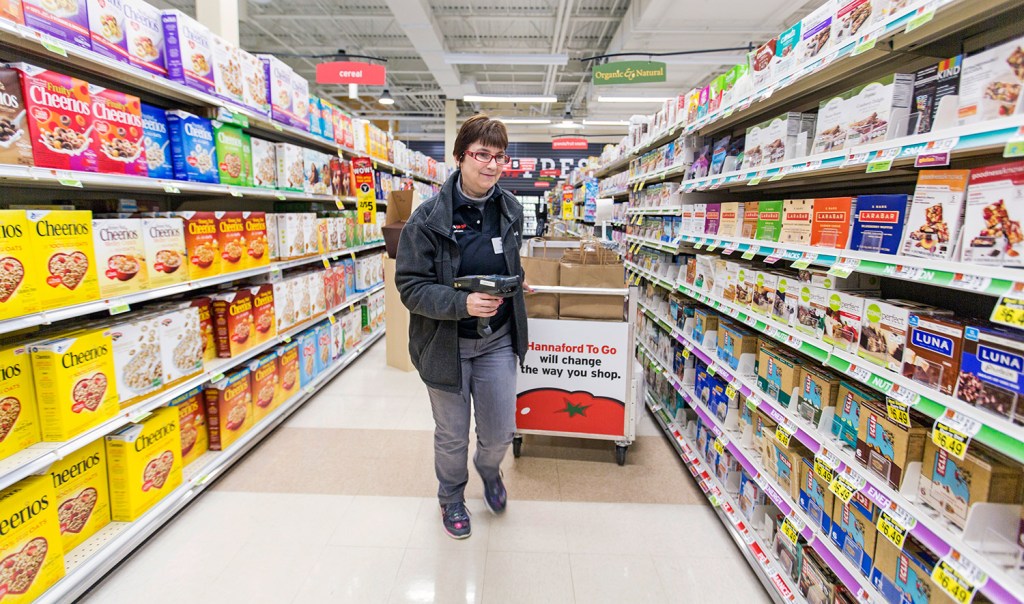
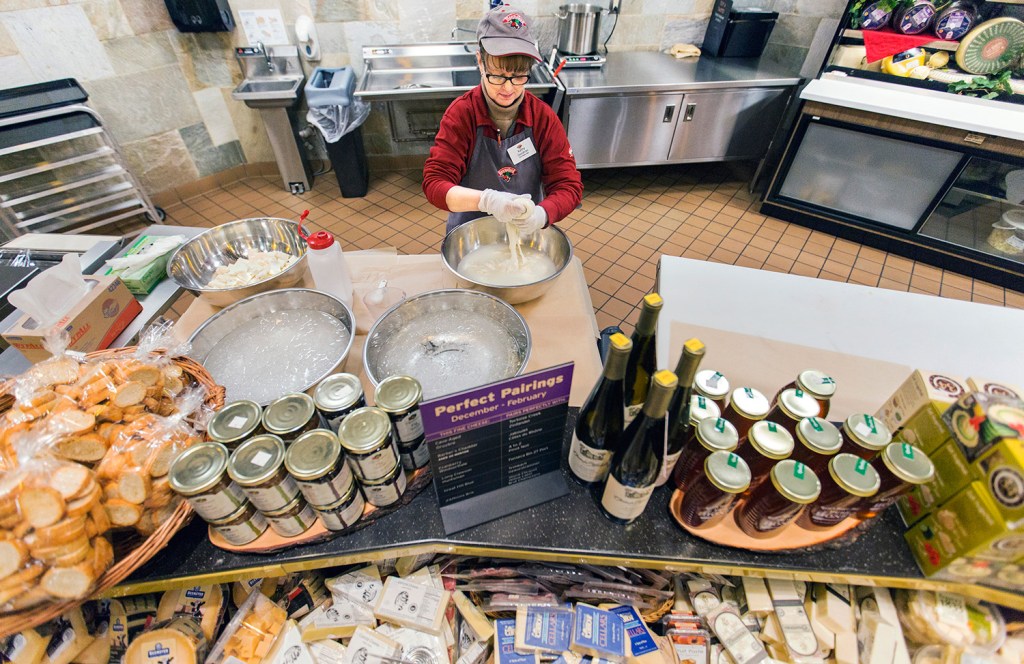

Comments are no longer available on this story